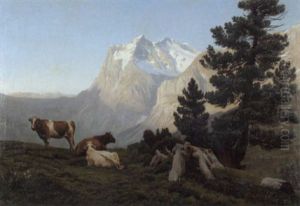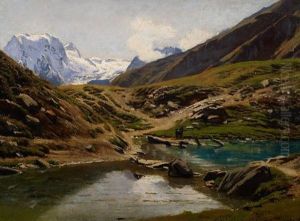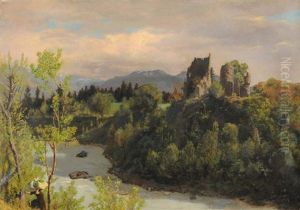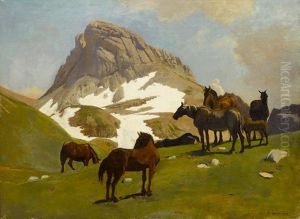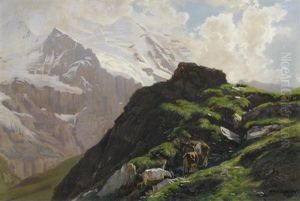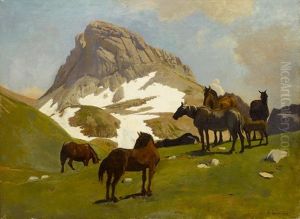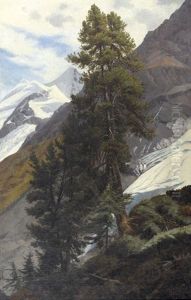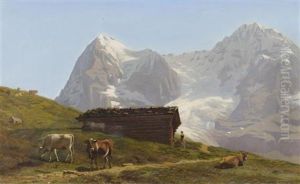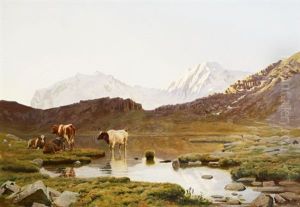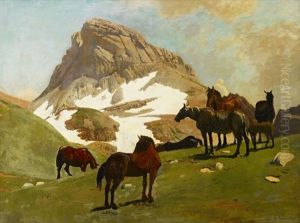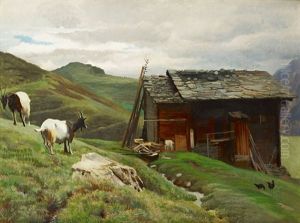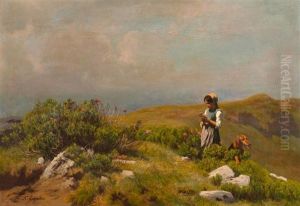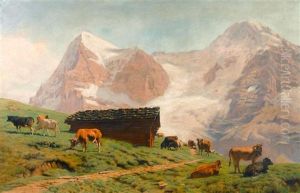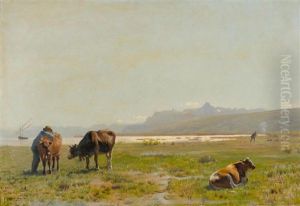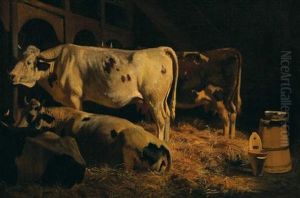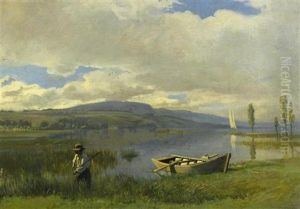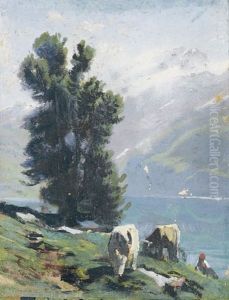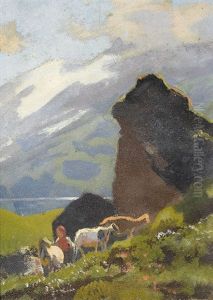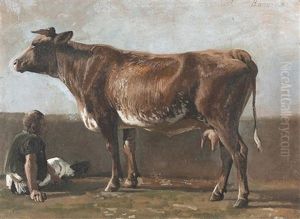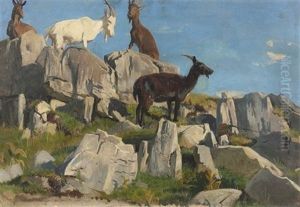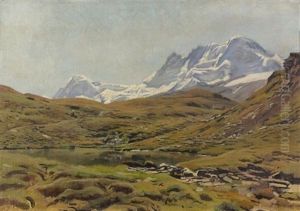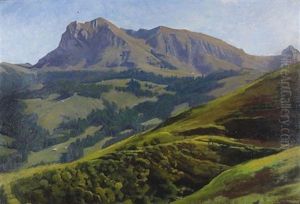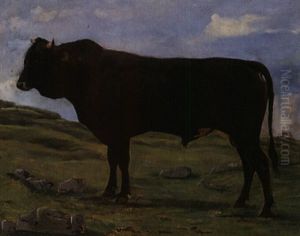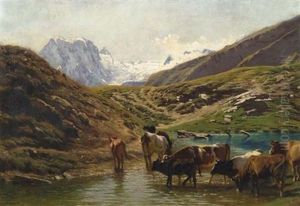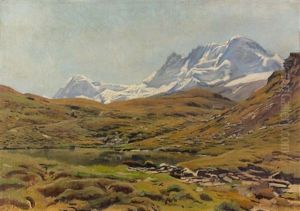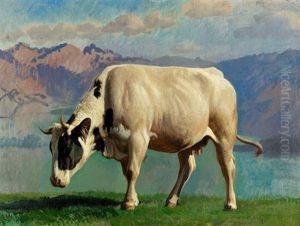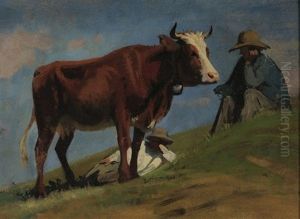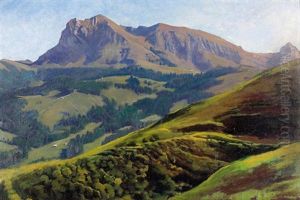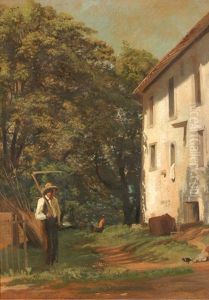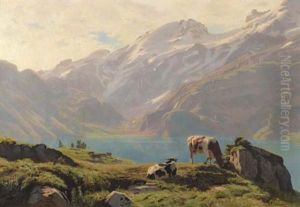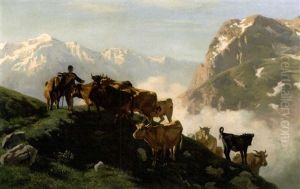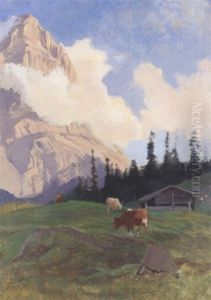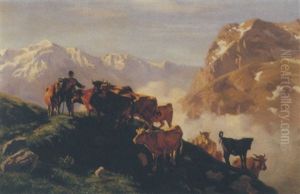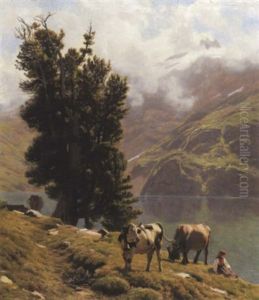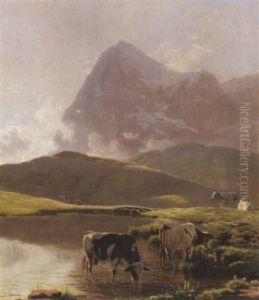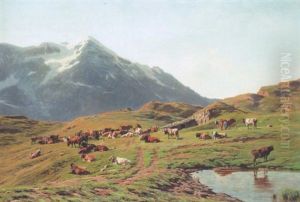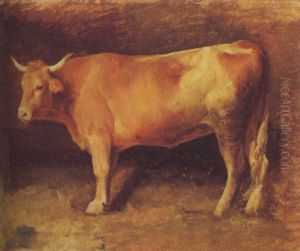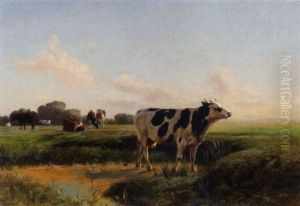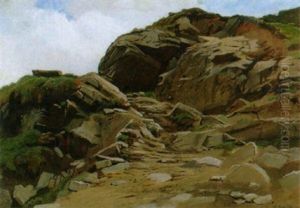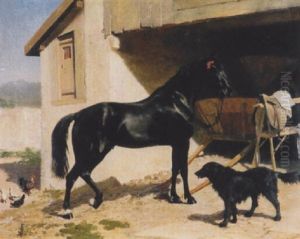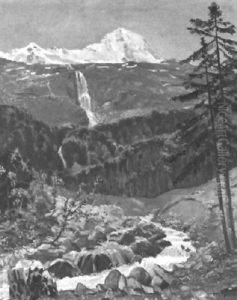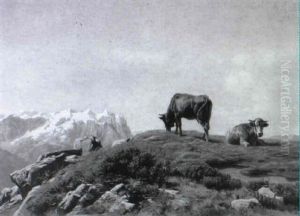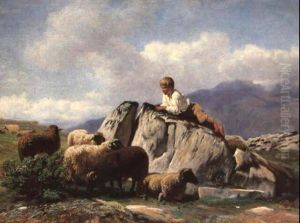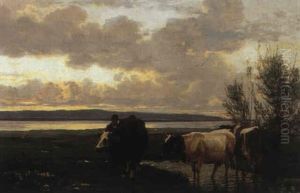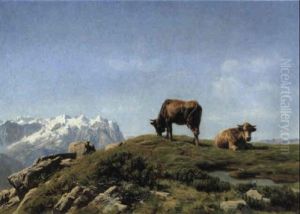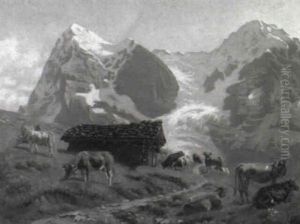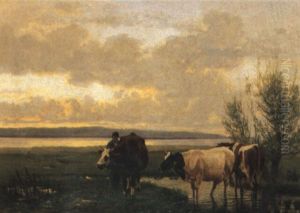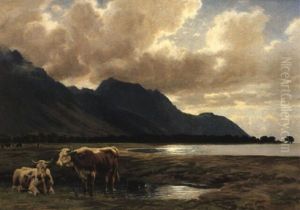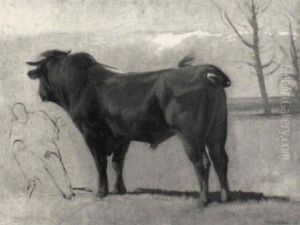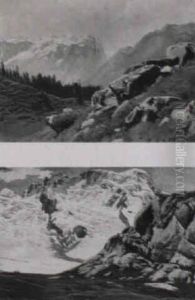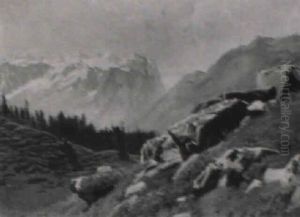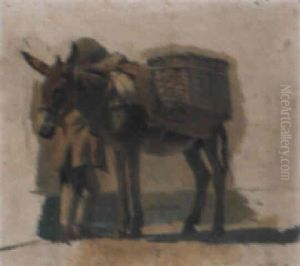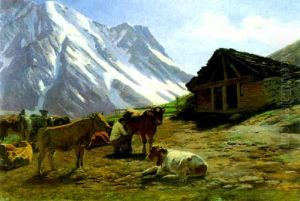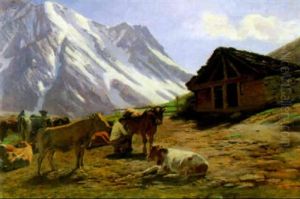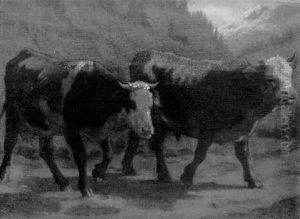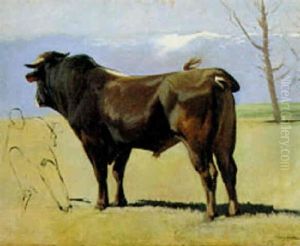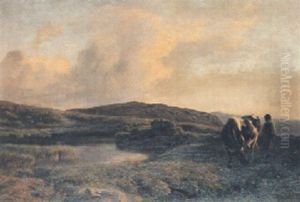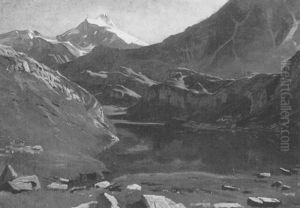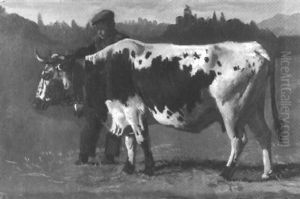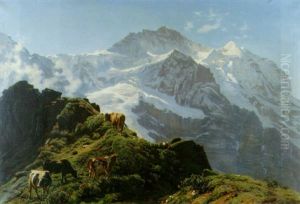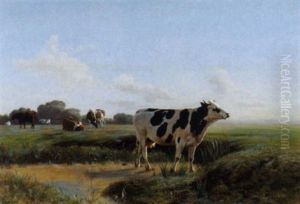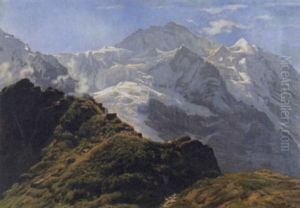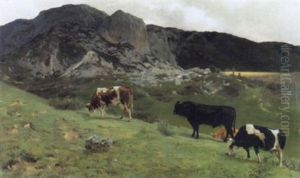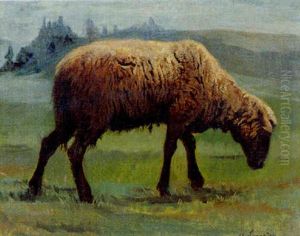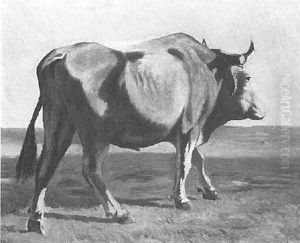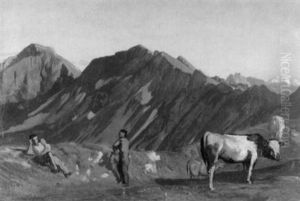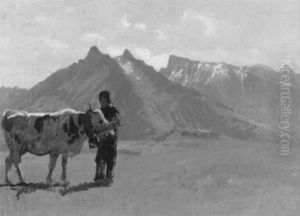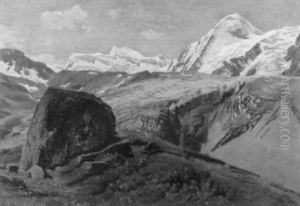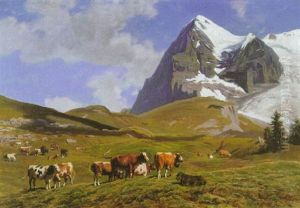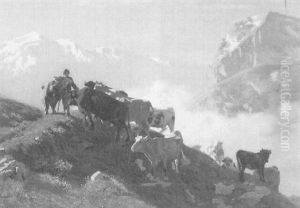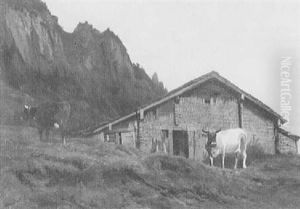Albert Lugardon Paintings
Albert Lugardon was a Swiss painter and lithographer born in Geneva in 1812. Not as widely known as some of his contemporaries, Lugardon's work nevertheless contributed to the artistic landscape of the 19th century, with a focus on portraiture, genre scenes, and historical paintings.
Lugardon initially trained under the tutelage of the Geneva painter Jean-Leonard Lugardon, who is presumed to be his brother. He then continued his artistic education in Paris, where he was influenced by the French neoclassical style and the Romantic movement that was prevalent in European art at the time. His early works showcased a strong command of form and an interest in historical subjects, often drawing from classical antiquity and biblical themes.
Throughout his career, Albert Lugardon created numerous lithographs, a popular medium during the 19th century, which allowed for the mass production of images. It was through these lithographs that Lugardon was able to reach a wider audience, contributing to pictorial education and the dissemination of visual culture.
Lugardon's portraiture demonstrated his ability to capture the essence and character of his sitters. His portraits were well-regarded for their detail and the lifelike quality he imparted to the subjects. His genre scenes often depicted everyday life with a sense of intimacy and a focus on the human experience, echoing the larger European artistic movement towards realism.
Despite his skill and contributions, Lugardon's work did not achieve the same level of fame as some of his peers. However, his paintings and lithographs continue to be appreciated by art historians and collectors for their historical value and artistic merit.
Albert Lugardon's career spanned a period of significant change in the art world, with the advent of photography and the transition towards modernism. He remained, however, largely traditional in his approach, adhering to the techniques and styles that had been established during his formative years.
Albert Lugardon passed away in 1884 in Geneva. His works remain in various collections and museums, offering a glimpse into the artistic endeavors of the 19th century, and they preserve the legacy of a Swiss artist whose contributions to the arts were modest yet noteworthy.
